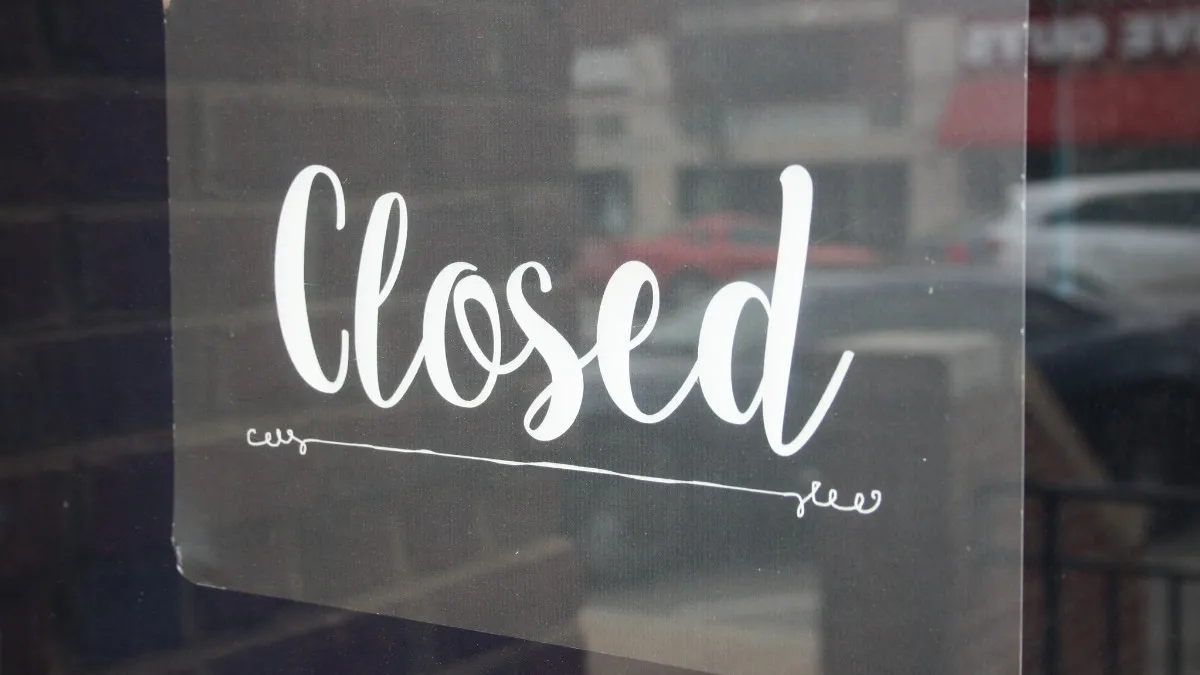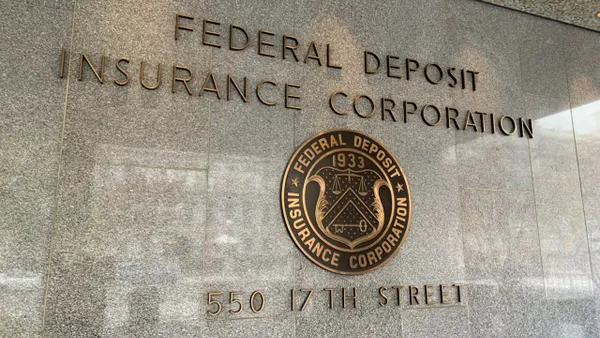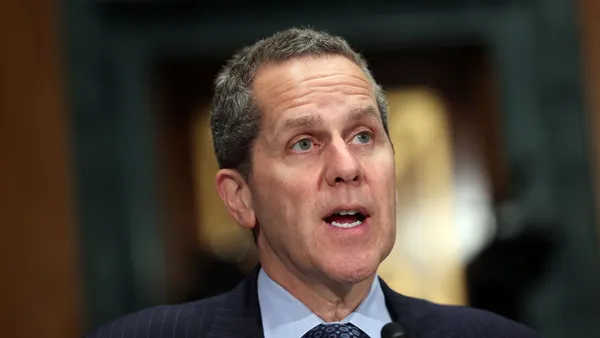Dive Brief:
- Twelve percent of Black and Latino business owners who applied for Paycheck Protection Program (PPP) loans reported receiving what they asked for, according to a survey the Global Strategy Group conducted on behalf of Color of Change and UnidosUS, two equal rights organizations. Meanwhile, 26% said they received a fraction of what they had requested. Nearly half of the 500 business owners surveyed between April 30 and May 11 said they anticipated having to close permanently within the next six months, The New York Times reported. Two-thirds of the survey's respondents sought loans of less than $50,000. And almost half said they've had to lay off employees.
- The figures come as lawmakers are working to overhaul at least two of the PPP's limits: the requirement that 75% of the loan money be used toward payroll for the loan to be forgiven, and the eight-week deadline by which businesses need to use the loan, according to The Wall Street Journal.
- The Small Business Administration (SBA) and Treasury Department on Friday released an 11-page application borrowers can use to seek forgiveness for PPP loans. The guidance comes more than two weeks after the April 26 deadline Congress set for the agencies.
Dive Insight:
The survey figures highlight the historically weak relationships banks have with Black and Latino-owned companies and draw a sharp contrast against statistics the Census Bureau released Friday, indicating 38% of small businesses received PPP aid.
"If we don't get policies to protect these communities, we will lose a generation of Black and brown businesses, which will have deep impacts on our entire country’s economy," Rashad Robinson, the president of Color of Change, told The New York Times.
One company looking to play equalizer is EquiTrust Life Insurance. EquiTrust, which is majority owned by Magic Johnson Enterprises, is providing $100 million to fund the roughly 5,000 PPP loans that nonbank lender MBE Capital Partners has had approved by the SBA.
About 80% of those loans are for nonwhite-owned businesses, MBE’s chief executive, Rafael Martinez, told The Wall Street Journal.
"We’ve been picking up the people that nobody else wants," he said.
About 37% of PPP funds remain available three weeks after the program’s second round launched, according to the SBA’s website. That contrasts with the first round, which was drained in 13 days — but also indicates some small businesses are exhausted by jumping through the ever-changing hoops to get the loans. As of last week, Treasury and the SBA had issued nine interim final rules and more than 40 pieces of guidance since the program’s April rollout.
"We’ve gone through the five stages of grief," Bilal Zuberi of Lux Capital, told Bloomberg. Each time one of Zuberi’s startups thought it had satisfied a legal or technical obstacle to be part of the program, another emerged, he said. Of the five companies in his portfolio that likely qualify, one might take the money, Zuberi said.
And he's not the only borrower to equate the process to the stages of grief.
"Mostly, I have become angry. I think it’s part of the grieving process," Janice Riordan, who runs a women’s clothing boutique in Venice, Florida, told The Wall Street Journal. "I feel it isn’t worth taking this chance. At the push of a button, it could be halted again."
Riordan said she lost $250,000, or 70%, of her revenue from mid-March to early May. She has been able to bring back three of her six employees after receiving the PPP loan, but sales are 30% below normal even after her store reopened this month, she said.
Guidance the SBA and Treasury released Friday lets small businesses calculate payroll costs using an "alternative" eight-week covered period that aligns with their regular payroll cycles. It also makes an exemption to the reduction in loan forgiveness for borrowers who have made "a good-faith, written offer to rehire workers that was declined," according to American Banker.
However, the guidance doesn’t address the requirement that 75% of PPP funds be put toward payroll. And criticism there is mounting.
The SBA's inspector general issued a report May 8 that said the SBA strayed from Congress’s intention by instituting the 75% rule, which was never mandated by the legislation.
The rule was imposed to "effectuate the core purpose of the statute and ensure finite program resources are devoted primarily to payroll," the SBA said. Changing the rule would not require legislative action — Treasury can do that on its own, a spokesman for Sen. Marco Rubio R-FL, told the Journal. But extending the eight-week period to use the funds does.
"When we conceived the program, we thought businesses would be able to get up and running after eight weeks, but we know now that’s not the case," Sen. Ben Cardin, D-MD, said in a statement.
The House of Representatives voted to extend the eight-week period in the PPP to 24 weeks as part of a $3 trillion coronavirus relief bill lawmakers passed Friday. But Senate Republican leaders have said the latest House bill won't pass their chamber, partly because some of its provisions are not directly tied to the coronavirus.
The National Federation of Independent Businesses has asked Congress to expand the repayment period for the amounts that aren’t forgiven from two years to five, and to allow businesses to apply for PPP loans more than once if needed.











